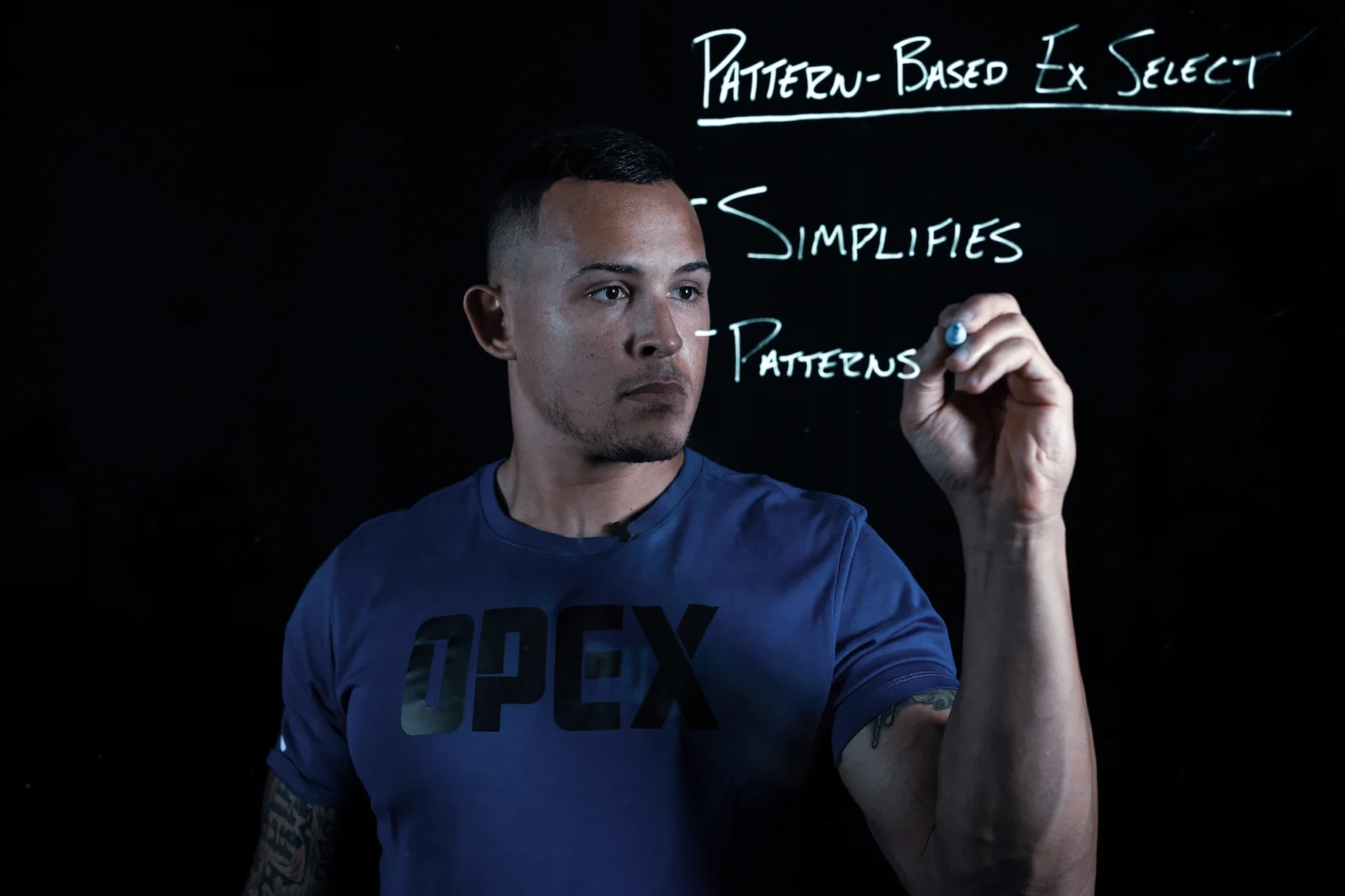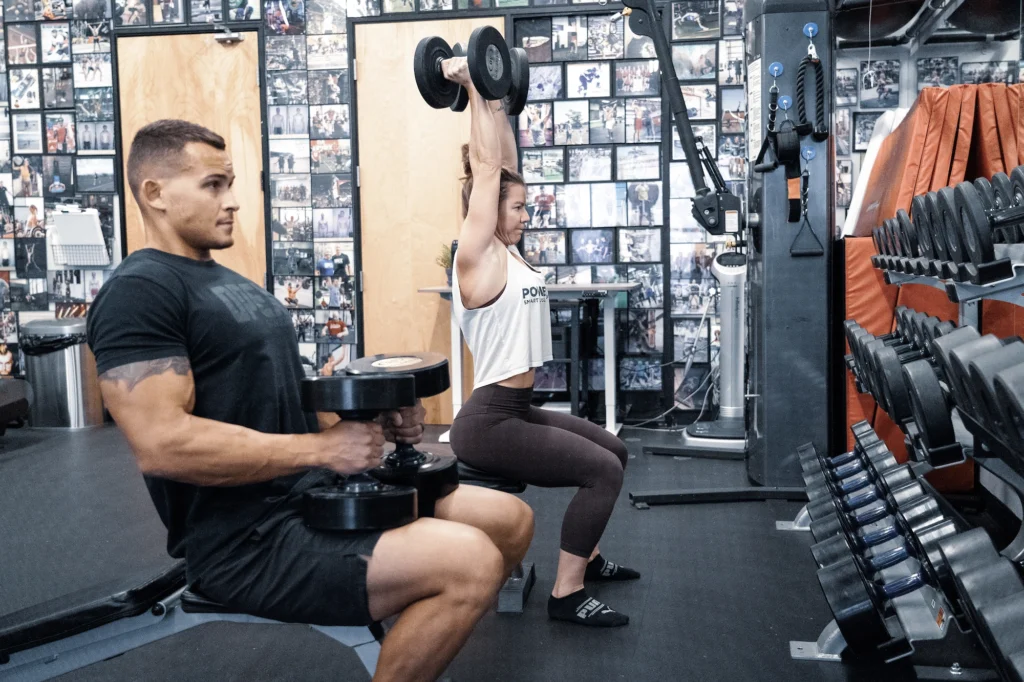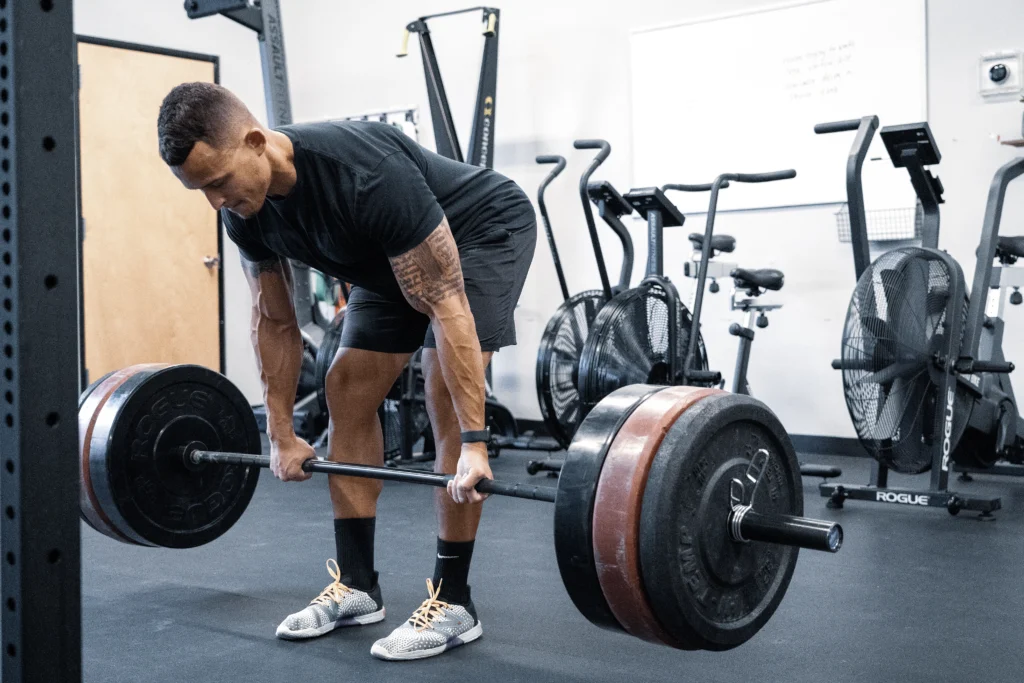Coaches Corner With Carl Hardwick: Pattern-Based Program Design

Rather than designing programs around specific muscle groups, try taking a pattern-based approach to training splits
Instead of the traditional approach of targeting specific muscle groups, at OPEX, we believe in the efficacy of a pattern-based approach. So, why should we use patterns, how do we assess them and how do we implement this concept into program design? I want to discuss these questions in this article.
Why Use Patterns?
First, let’s discuss why we should use patterns. We must understand that the human body operates as a connected system rather than a collection of individual muscles. In every movement, multiple muscle groups coordinate, contributing to overall functionality.
At OPEX, we emphasize six functional movement patterns: Squat, Bend, Lunge, Push, Pull and Core. By focusing on these patterns, we align exercise selection with real-world functionality that transcends beyond isolated gym exercises, making our training programs significantly more applicable to everyday life. This approach streamlines the exercise selection process, allowing us to prescribe what our clients need based on their unique capabilities.
The 6 Foundational Movement Patterns
- Squat: Squatting movements predominantly engage the lower body, specifically the quadriceps, hamstrings and glutes. Examples of exercises that fall into the squat pattern include:
- Back Squat
- Goblet Squat
- Front Squat
- Overhead Squat
- Box Squat
- Pistol Squat
- Bend: Bending patterns mainly target the posterior chain, including muscles such as the glutes, hamstrings and lower back. Exercises in the bend pattern include:
- Deadlift Variations
- Good Mornings
- Kettlebell Swings
- Glute Bridge
- Hip Thrusts
- Lunge: The lunge pattern is crucial for lower body unilateral strength, mobility and stability. Lunge pattern exercises include:
- Lunge Variations
- Step-Up Variations
- Push: The push pattern biases the muscles on the anterior part of your body, such as the chest, shoulders and triceps. Examples of push pattern exercises are:
- Bench Press Variations
- Overhead Press
- Push-ups
- Dips
- Shoulder Press Variations
- Pull: The pull pattern targets the muscles on the posterior part of your body like the back, biceps and rear deltoids. Pull pattern exercises include:
- Pull-Up Variations
- Barbell Rows
- Dumbbell Rows
- Lat Pulldowns
- Face Pulls
- Bicep Curls
- Core: The core pattern is fundamental for overall stability and force transfer in almost every exercise. It works your abdominals, obliques and lower back. Core pattern exercises are:
- Plank Variations
- Carries
- Ab Rollouts
- Russian Twists
- Dead Bugs
- Hanging Leg Raises

How To Assess Patterns
The cornerstone of pattern-based program design is accurate assessment. At OPEX, we use a two-pronged approach to gauge our clients’ capabilities—movement screening and fitness monitoring exercises (FMEs).
Our movement screen, OPEX Move, assesses motor control capabilities within each movement pattern. Here are examples of exercises we use and the patterns they assess:
- Air Squat: Squat
- Toe Touch: Bend
- Split Squat: Lunge
- Front Leaning Rest: Push
- Reverse Plank: Pull
- Side Plank: Core
These simple yet insightful exercises provide valuable data about a client’s ability to efficiently navigate each movement pattern.
In addition to movement screening, we use FMEs to glean more detailed insights. Before progressing, we ensure motor control is established in the core pattern—an essential foundation. Once this foundation is established, we progressively evaluate the other five patterns independently, always adhering to the principle of progression. In simpler terms, clients must successfully perform FMEs for a particular contraction type (Motor Control→Strength Endurance→Max Contraction) in a pattern before advancing to the next contraction type.

How To Implement Pattern-Based Program Design
Now that we have explored the why and how of pattern assessment, let’s dive into the actual implementation. How do we translate this approach into functional, effective and individualized program design? It essentially involves three steps:
Step 1: Understand Which Exercises Fit Into Which Pattern of Movement
A key component of the pattern-based approach is discerning what exercises align with which movement pattern. This knowledge becomes crucial when the fit isn’t obvious. Consider, for instance, the dumbbell lateral raise. At first glance, it might not clearly fit into any of the six patterns. However, upon closer inspection, we realize that it supports the push pattern, based on the muscle groups biased in the movement, primarily the deltoids.
Understanding the patterns supported by each exercise allows us to better customize programs according to a client’s specific needs, abilities, and goals. It aids in creating a well-rounded program that fosters balanced muscular development and movement efficiency.
Step 2: Build Out a Daily Plan Based on the Patterns of Movement
Armed with an understanding of our client’s capabilities and the priorities for their training program, we can then craft a daily plan rooted in the six movement patterns. This plan serves as a scaffolding for the exercises we’ll eventually prescribe. For instance, the weekly training split may look something like this:
- Monday: Squat, Pull, Bend, Push
- Wednesday: Lunge, Core, Bend, Push
- Friday: Squat, Pull, Bend, Core
This distribution ensures that each pattern is addressed multiple times a week, fostering balanced development and avoiding overemphasis or neglect of any particular pattern.
Step 3: Design the Training Program
Finally, with the knowledge of what exercises align with each pattern and a daily plan in place, we can design a program. Now we can lay in exercises with a pattern bias in the program design.
For example, on a Monday, we might include barbell back squats for the squat pattern, bent-over rows for the pull pattern, Romanian deadlifts for the bend pattern and push-ups for the push pattern. This specificity enables us to craft a program that effectively addresses each pattern, contributing to comprehensive, functional fitness for our clients.
Pattern-based program design is not a one-off process—it’s an ongoing cycle of identifying, assessing and implementing. As our clients develop, their movement patterns evolve, demanding that their programs evolve in tandem. As coaches, our task is to keep observing, adjusting and guiding our clients on their unique fitness journeys.
Implementing a pattern-based approach to program design is a potent tool in our coaching arsenal. By understanding movement patterns, we can create programs that are more personalized, functional and efficient. And more importantly, by meeting our clients where they are, we can guide them towards where they want to go, one pattern at a time.
See Carl’s previous column here.
Carl Hardwick, CEO of OPEX Fitness & CoachRx is a strong advocate for bringing honor to the coaching profession and raising the value of all fitness coaches. He lectures frequently about program design, business systems, and building a sustainable coaching career. Follow him on Instagram @hardwickcarl and OPEX Fitness on YouTube



